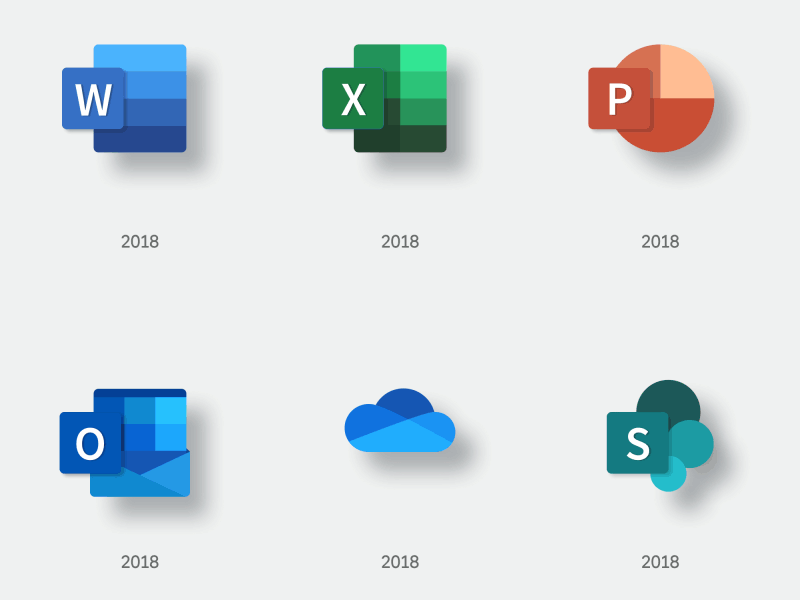Table of Contents

Introduction
SharePoint is a powerful collaboration and document management solution developed by Microsoft. It provides businesses with the tools they need to store, organize, and share their files and information, and to collaborate and communicate with their team. This is an integral part of Microsoft 365 and provides businesses with a comprehensive solution for their collaboration and productivity needs.
- Document Management: It provides businesses with a central location to store and manage their files, documents, and information. It enables businesses to create team sites, where team members can collaborate on projects, share files, and work together to get work done. It is also providing version control, enabling businesses to track changes to their files and revert to previous versions if necessary.
- Intranet: It provides businesses with a custom intranet, where they can store and share important information, such as policies and procedures, news, and events. It also provides businesses with the tools they need to create and manage web pages, lists, and libraries, and to customize the look and feel of their intranet. Sharepoint’s intranet provides businesses with a central location to store and access the information they need to get work done.
- Collaboration: It provides businesses with the tools they need to collaborate and communicate with their team. It includes features such as Microsoft Teams, which allows teams to chat, hold virtual meetings, and share files in real-time. Sharepoint also includes workflows, enabling businesses to automate their processes and streamline their work. With this, businesses can collaborate and communicate more effectively, improving their productivity and reducing their workload.
- Security and Privacy: It is designed with security and privacy in mind, and provides businesses with the tools they need to protect their data and employees. It includes features such as multi-factor authentication, data encryption, and threat protection, which help businesses stay secure and compliant with privacy regulations. It provides businesses with a secure solution for their collaboration and document management needs.
- Integration with Microsoft 365: SharePoint is an integral part of Microsoft 365 and provides businesses with a comprehensive solution for their collaboration and productivity needs. It integrates seamlessly with other Microsoft apps, such as Word, Excel, PowerPoint, and OneDrive, providing businesses with a seamless experience. With Microsoft 365 and Sharepoint, businesses can work from anywhere, on any device, and get work done more effectively.
Benefits
SharePoint is a powerful collaboration and document management solution developed by Microsoft. It provides businesses with the tools they need to store, organize, and share their files and information, and to collaborate and communicate with their team. This is an integral part of Microsoft 365 and provides businesses with a comprehensive solution for their collaboration and productivity needs.
In this article, we’ll explore the many benefits of using it for your business, including increased productivity and efficiency, improved security and privacy, customization options, scalability, and seamless integration with Microsoft 365.
- Increased Productivity and Efficiency: SharePoint provides businesses with the tools they need to collaborate and communicate with their team more effectively, improving their productivity and reducing their workload. Its team sites, intranet, and collaboration tools, such as Microsoft Teams, enable businesses to work together in real-time, sharing files, chatting, and holding virtual meetings. The ability to automate processes and streamline work with SharePoint’s workflows helps businesses work more efficiently and reduces manual tasks.
- Improved Security and Privacy: SharePoint is designed with security and privacy in mind, and provides businesses with the tools they need to protect their data and employees. It includes features such as multi-factor authentication, data encryption, and threat protection, which help businesses stay secure and compliant with privacy regulations. This means that businesses can use this with confidence, knowing that their data and employees are protected.
- Customization Options: SharePoint provides businesses with the ability to customize their intranet to meet their specific needs. Businesses can choose the look and feel of their intranet, create and manage web pages, lists, and libraries, and customize the information they want to share with their team. With SharePoint, businesses can create an intranet that meets their unique needs, improving their collaboration and productivity.
- Scalability: SharePoint is a scalable solution, which means that it can grow and change with your business. As your business grows and evolves, This can adapt and provide the tools and features you need to meet your changing needs. This makes Sharepoint a long-term solution for your business collaboration and document management needs.
- Seamless Integration with Microsoft 365: SharePoint is an integral part of Microsoft 365 and provides businesses with a comprehensive solution for their collaboration and productivity needs. It integrates seamlessly with other Microsoft apps, such as Word, Excel, PowerPoint, and OneDrive, providing businesses with a seamless experience. With Microsoft 365 and SharePoint, businesses can work from anywhere, on any device, and get work done more effectively.
History
SharePoint is a widely-used enterprise content management platform that has been around for over two decades. Developed by Microsoft, It has evolved from a simple collaboration tool to a comprehensive platform for document management, intranet, and team collaboration. In this article, we’ll take a look back at the history of this and explore how it has evolved over the years.
- SharePoint 2001: SharePoint was first released in 2001 as a simple collaboration tool that allowed teams to store, organize, and share their files and information. It was designed as a solution for small businesses, and provided basic features for document management, such as version control, document libraries, and file sharing.
- SharePoint 2003: With the release of SharePoint 2003, Microsoft introduced several new features, including the ability to create and manage web pages, lists, and libraries, and the introduction of Sharepoint Workspace. It Workspace allowed teams to work offline and sync their data when they were back online.
- SharePoint 2007: With the release of SharePoint 2007, Microsoft continued to expand the platform’s capabilities, adding features such as enterprise search, improved document management, and workflow automation. Sharepoint 2007 was a significant upgrade from the previous version and provided businesses with a more comprehensive solution for their collaboration and document management needs.
- SharePoint 2010: SharePoint 2010 introduced several new features, including social collaboration tools, improved search, and the ability to create and manage workflows. With Sharepoint 2010, businesses could share their files and information more effectively, and collaborate and communicate with their team in real-time.
- SharePoint 2013: With the release of SharePoint 2013, Microsoft continued to improve the platform’s capabilities, adding features such as improved search, better mobile support, and the ability to create and manage sites. Sharepoint 2013 also introduced the ability to customize the look and feel of the platform, making it easier for businesses to create an intranet that met their specific needs.
- SharePoint 2016: SharePoint 2016 introduced new features for hybrid environments, improved document management, and better compliance and security features. With Sharepoint 2016, businesses could work with their data and files more effectively and keep their data secure and compliant with privacy regulations.
- SharePoint 2019 and Beyond: With the release of SharePoint 2019, Microsoft continued to improve the platform’s capabilities, adding new features for collaboration and communication, improved document management, and better integration with Microsoft 365. With Sharepoint 2019, businesses could work more effectively, both in the office and on the go, and get work done more efficiently.
Tools

In this article, we’ll take a look at the essential tools for Share-point and how they can help you get the most out of this powerful platform.
- Document Libraries: SharePoint document libraries are an essential tool for businesses that need to manage and store their documents. With document libraries, you can store, organize, and share your documents, as well as collaborate on them with your team. You can also control versioning, set permissions, and search for documents, making it easier to manage your documents and keep your team informed.
- Lists: SharePoint lists are an essential tool for businesses that need to manage and track their data. With lists, you can create and manage custom lists, such as task lists, calendar events, and more. You can also customize the columns, set up alerts, and share your lists with others. This makes it easier to manage your data and keep your team informed.
- Team Sites: SharePoint team sites are a great way to collaborate with your team on projects and share information. With team sites, you can create a centralized location for your team to store, share, and collaborate on documents, lists, and more. You can also set up permissions, control versioning, and keep everyone informed with alerts and newsfeeds.
- Workflows: SharePoint workflows are an essential tool for automating repetitive tasks and processes. With workflows, you can automate tasks, such as approvals, document routing, and more. You can also set up custom workflows, track the status of workflows, and receive alerts when tasks are complete. This makes it easier to manage your processes and ensure that your team is working efficiently.
- Power Apps: Power Apps is a powerful tool for building custom business applications on Share-point. With Power Apps, you can create custom forms, automate processes, and connect to other data sources. You can also customize the look and feel of your apps and share them with others. This makes it easier to streamline your processes and improve your productivity.
Conclusion
In conclusion, SharePoint is a powerful collaboration and document management solution that provides businesses with the tools they need to store, organize, and share their files and information, and to collaborate and communicate with their team. It is an integral part of Microsoft 365 and provides businesses with a comprehensive solution for their collaboration and productivity needs. Whether your business is looking for a central location to store and manage their files, a custom intranet, collaboration tools, or a secure solution for their data, it has the tools and features they need to get work done.


